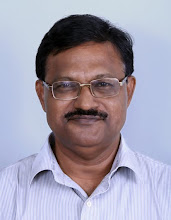Wednesday, June 14, 2006
O J's Corner : Reflections
Admit for ailments
Get more ailments
The affable Dr V V Francis, a paediatrician gifted with extra-ordinary amount of pleasantness in dealing with his patients and their parents, used to guardedly admit my ailing son to hospital.
Born extremely prematurely, he started suffering from wheezy bronchitis and immunity problems. But I cannot forget the extreme devotion with which the doctor has been treating him since his birth for the last thirteen and a half years. And during this period my son’s condition has been improving step by step.
Parents become anxious when the ailing children are not immediately admitted to hospital, but sent home with medicines for recuperation. I was also not different, but confident that the doctor’s services have been at hand.
I recount this with a purpose. World Health Organisation has declared 2006 as the Year of Nosocomial Infections.
Don’t worry about the word, nosocomial. It is Greek for hospital. Which means nosocomial infections are Hospital Acquired Infections (HAI).
One gets admitted to healthcare facilities such as hospitals and nursing homes for a specific disease and contracts other diseases from the place. There are pathogens which do not respond to antibiotics. If infected, the results would be costly and life-threatening.
Approximately 100,000 people die of HAI every year, according to a study conducted by a team of physician-scientists of the University of Nebraska Medical Center. The findings were published in the October, 2005, issue of Annals of Internal Medicine.
In the US alone, there are 2.5 million HAI infections a year. Approximately 10 per cent of hospital patients contract HAI in the developed countries.
In the developing countries, the prevalence is four times higher. In India, it is estimated that there are 25 per cent of the patients suffering from nosocomial infections or HAI. This is responsible for more mortality than any other form of accidental deaths.
The prevalence of infection is in the urinary tracts, surgical wounds, respiratory tract and blood stream.
Patients with poorly developed immune systems, the elderly and young children are more susceptible to this infection.
There are 100 million procedures performed at hospitals each year. Of these, a large number of cases get HAI. Those infected would have to remain in hospital 2.5 times longer than the time needed to treat the original ailment for which they have been admitted.
The cost factor for treating nosocomial infections is huge.
There are universally accepted medical protocols to minimise transmission of infection from patient to patient or from hospital workforce to patients.
Infection would set in accidentally or on account of disregard for the accepted medical protocols to prevent HAI.
Much attention has been concentrated these days on HIV and AIDS treatment and prevention. Fair enough. The condition, for which there is no cogent cure as yet, should be dealt with on a war-footing. India is definitely sitting on a powder-keg of HIV/AIDS. So, don’t dismiss this as a phenomenon worst affecting sub-Saharan Africa.
But Hospital Acquired Infection too craves for a cure.
Subscribe to:
Post Comments (Atom)


.jpg)



No comments:
Post a Comment